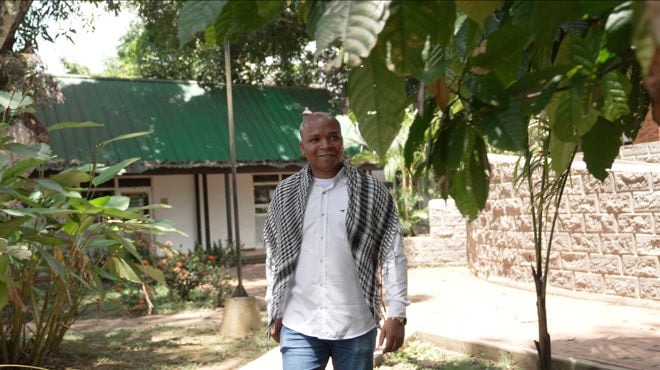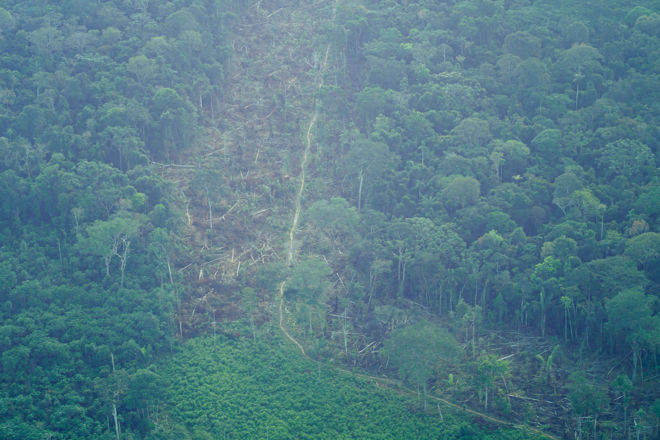Former Enemies Collaborate to Save the Rainforest
Both war and peace can have major consequences for nature. An example can be found in the Amazon region of Colombia. In this region, deforestation increased following the signing of the peace agreement between the Columbian government and the FARC guerrilla group in 2016. Former soldiers are now working with the authorities and local organisations to protect nature.
During the 50-year long civil war in Colombia, much of the rainforest was controlled by the FARC guerrillas. When a long-awaited peace treaty was eventually signed, peace came with a downside – a power vacuum in the rainforest emerged. Cattle owners, large-scale farmers, the mining industry and drug cartels all moved in, cleared the forest and built roads to meet their various needs.
Without government regulation, many people settled in the region and caused extensive damage to the natural environment, and deforestation increased.
– No one knows the rainforest better than us
One of those to lay down their weapons was Ricardo Semillas. He and several thousand other FARC soldiers began a new life after 2016. He is now one of many former guerrilla soldiers working with the authorities and local organisations to protect nature.
– I believe there is a force in the rainforest that unites us all, said the former soldier.

Ricardo Semillas joined FARC when he was 13 years old, after his father was murdered by the military. He lived in the rainforest for 17 years and eventually became a commander in FARC. Since 2016, he has been living in a reintegration camp in San Jose del Guaviare, Amazonas, Colombia. He works on a tourism project where tourists can go rafting in the Amazon and experience pink dolphins.
Semillas lives in the province of Guaviare, on the outskirts of the rainforest area previously under the control of FARC.
After spending 17 years as a guerrilla fighter, he knows the rainforest very well. This knowledge is important both for the local farmers he works with and for local stakeholders involved in eco-tourism.
From conflict to cooperation – Norway’s role
Deforestation in Colombia reached historically low levels in 2022 and 2023, but this trend was reversed in 2024. The area is still experiencing conflict, and there are many challenges to be faced. However, the efforts being made to promote peace and conservation of the rainforest continue, supported by Norway.
In 2023, Norway contributed NOK 448 million in aid to Colombia.
Among other things, these funds are used to support the work of Rainforest Foundation Norway to promote indigenous rights and forest conservation in the Colombian Amazon region, the Norwegian Refugee Council’s efforts concerning local development, job creation and the re-integration of former guerrilla soldiers, and Caritas’ work relating to forest conservation and poverty relief.

The rainforest seen from a plane used by the organization FCDS to monitor deforestation in the regions of Meta, Caqueta, and Guaviare. Here lies the primeval forest of Chiribiquete, considered one of the most untouched in the world, where uncontacted indigenous peoples likely still live. Along the edge zones, we see small clearings where coca is cultivated, as well as larger deforested areas, especially along roads, which are used for purposes such as cattle farming. During the civil war, FARC hid in these areas. San Jose del Guaviare, Amazonas, Colombia.
Norway also supports local environmental organisations such as Fundación para la Conservación y el Desarrollo Sostenible (FCDS) and Fundacion Gaia Amazonas. These organisations work to monitor the rainforest, promote indigenous rights, exert political influence and manage conflicts.
Norway also contributes to conflict prevention and peacebuilding efforts through organisations such as the Norwegian Human Rights Fund, Norwegian People’s Aid, the Norwegian Refugee Council, the United Nations Development Programme (UNDP) and UN Women.
Norway’s efforts to promote peace and forest conservation in Colombia are closely linked together and illustrate how environmental protection and peace efforts can go hand in hand.
In this film, we meet three Colombian indigenous leaders who have fought for their rights for decades - risking their lives in the process.